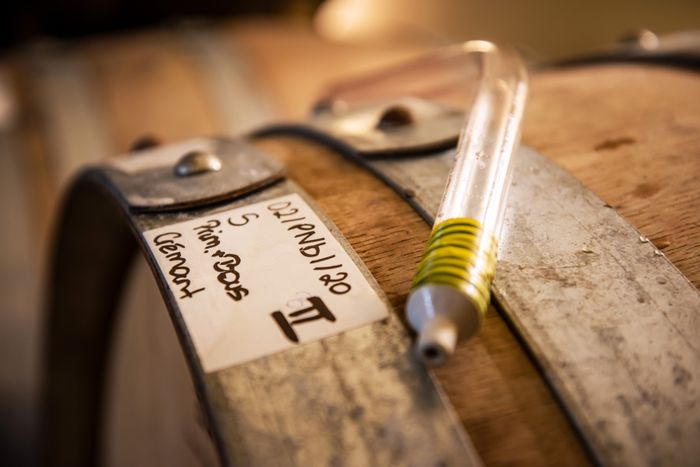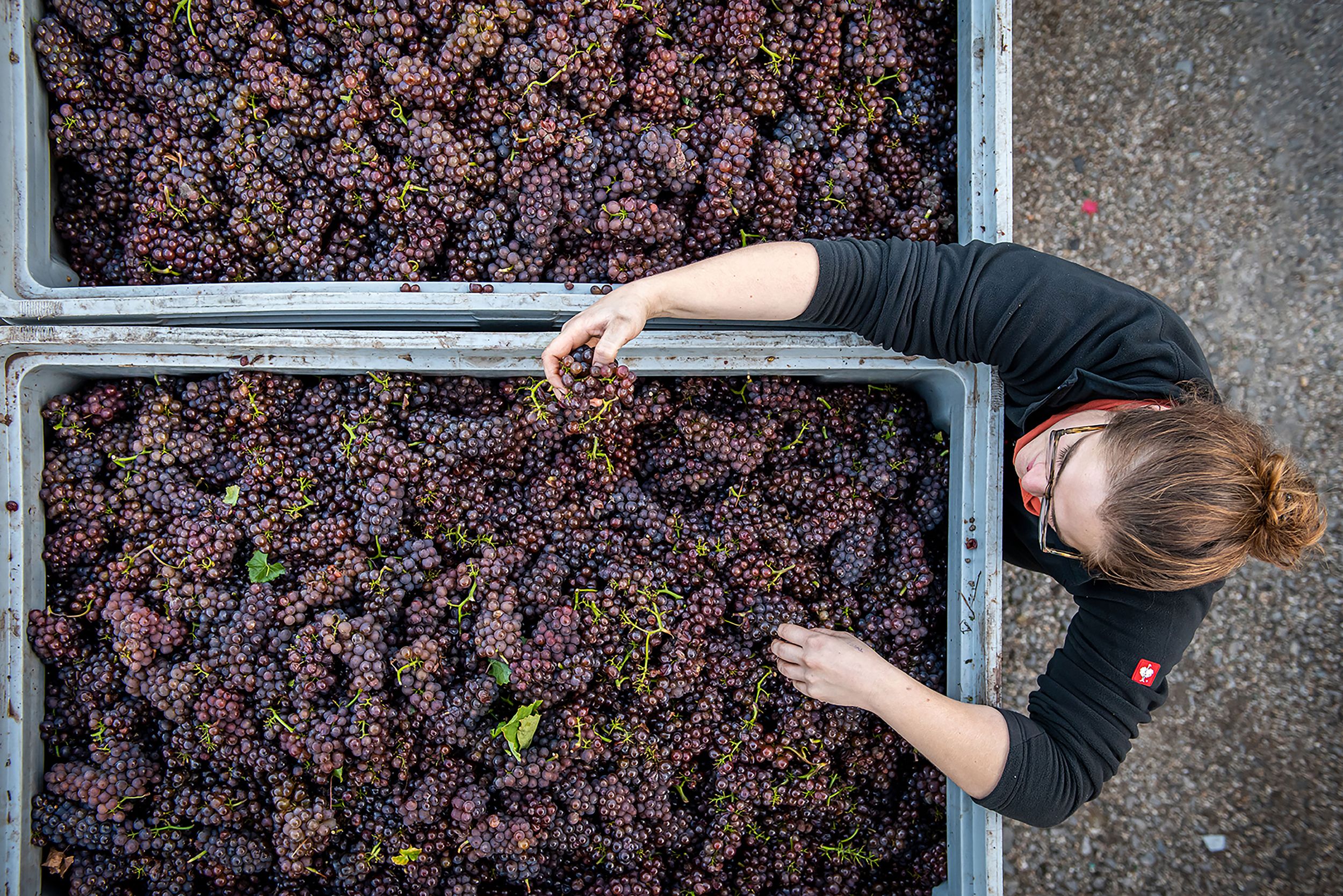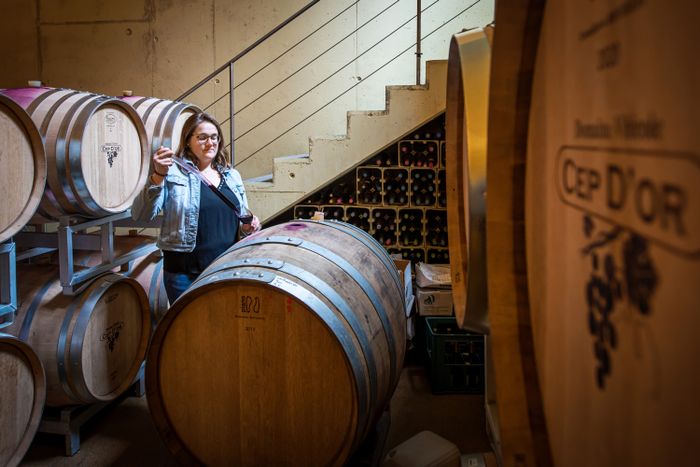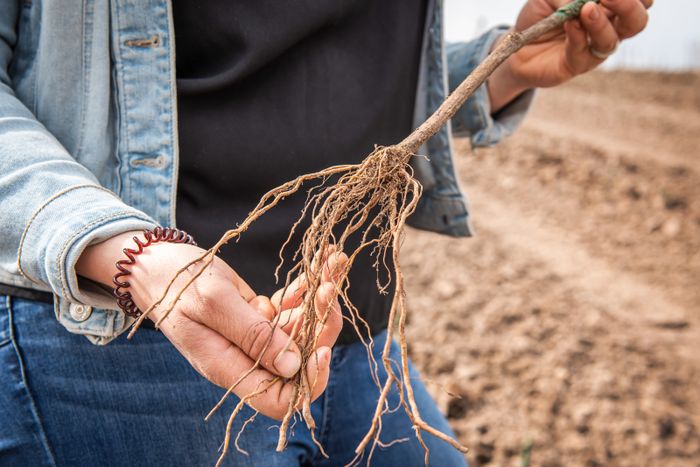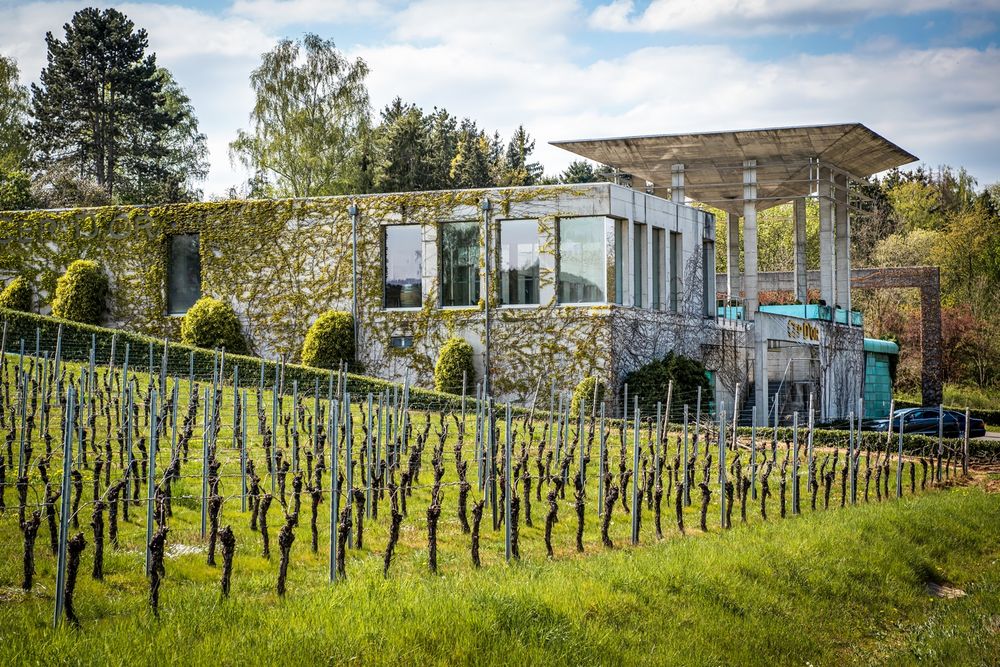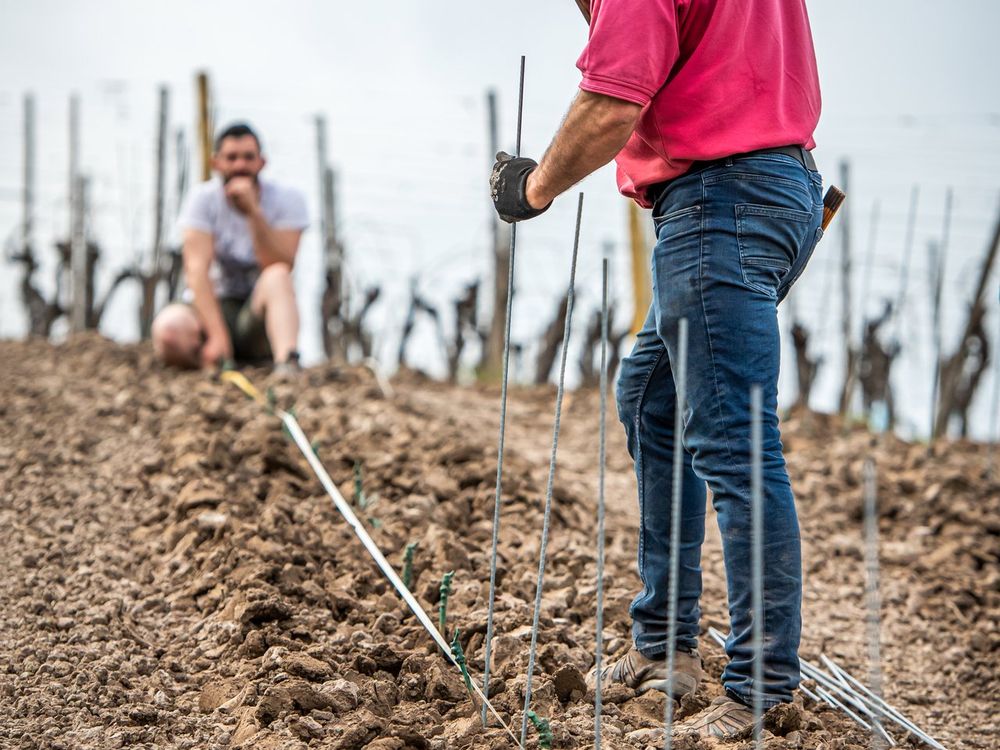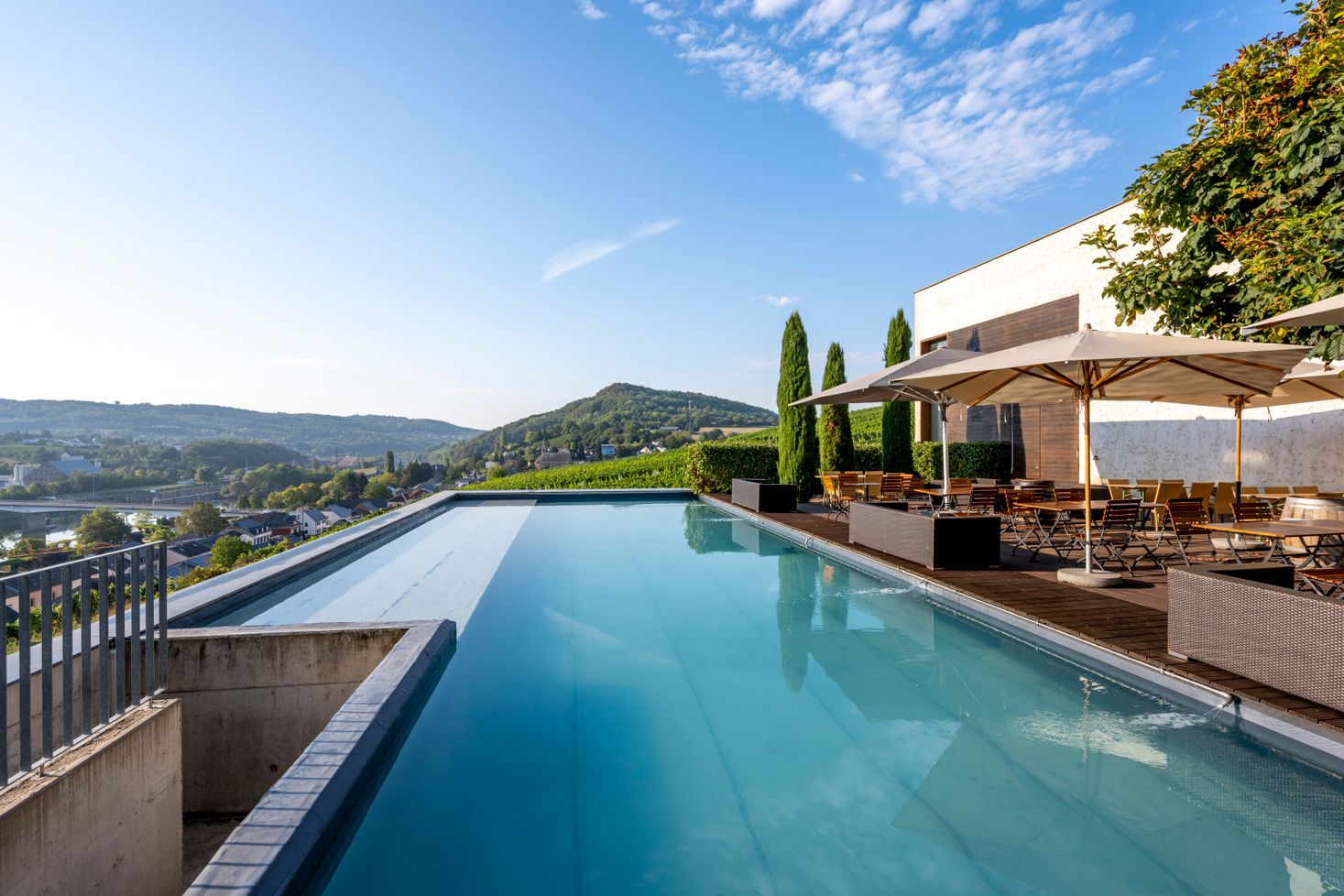In 1995 when he was 31 years old, Jean-Marie created this vineyard with the help of architect François Valentiny, only ten years his senior, who shared his enthusiasm for concrete and design. Together, they designed a striking building crowned by a tower that looks like an oversized grape press.
It’s an eye-catcher. “When you start a new winery, you have to draw attention to yourself,” says Jean-Marie, grinning. “Our family already owned the land here along the “Wäistrooss”. Everyone who drives by here will inevitably pass by our cellar. The more impressive it is, the more likely people are to be curious and pop in, if we’re lucky.”
The plan must have worked. The cellar is bursting at the seams. Wooden barrels are stacked on top of each other and stainless-steel tanks are crammed up to the ceiling. The Crémant is resting. By the way, the “Cuvée 36” lies here for at least 3 years, as its label suggests. Which leads us back to the time spans in which father and daughter think.
And this is where the romance comes into play. It lies between the ruby-red stained barrels, the dark, shimmering wine bottles and the boxes full of beautifully crafted labels waiting for young wines. The ingredients: pleasure, art, craft and a lot of love.
